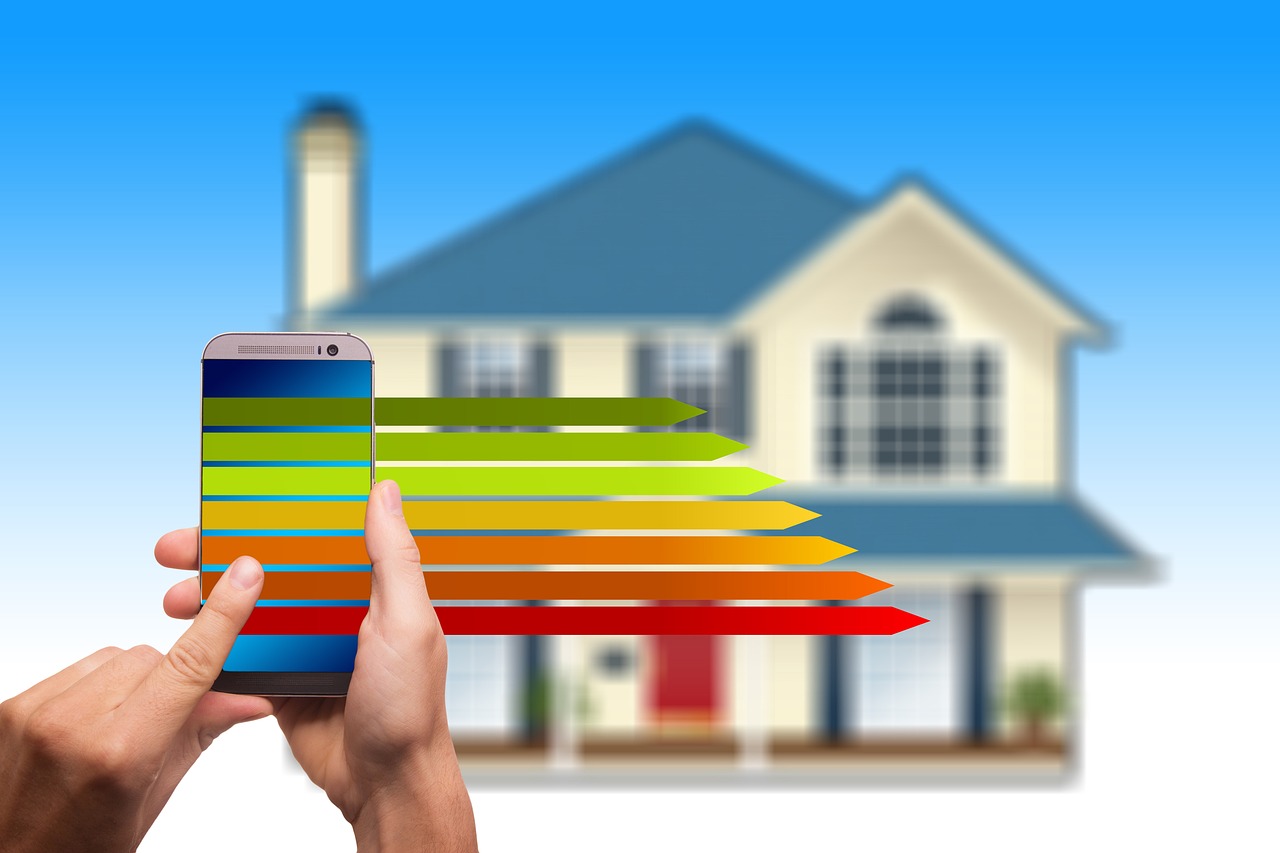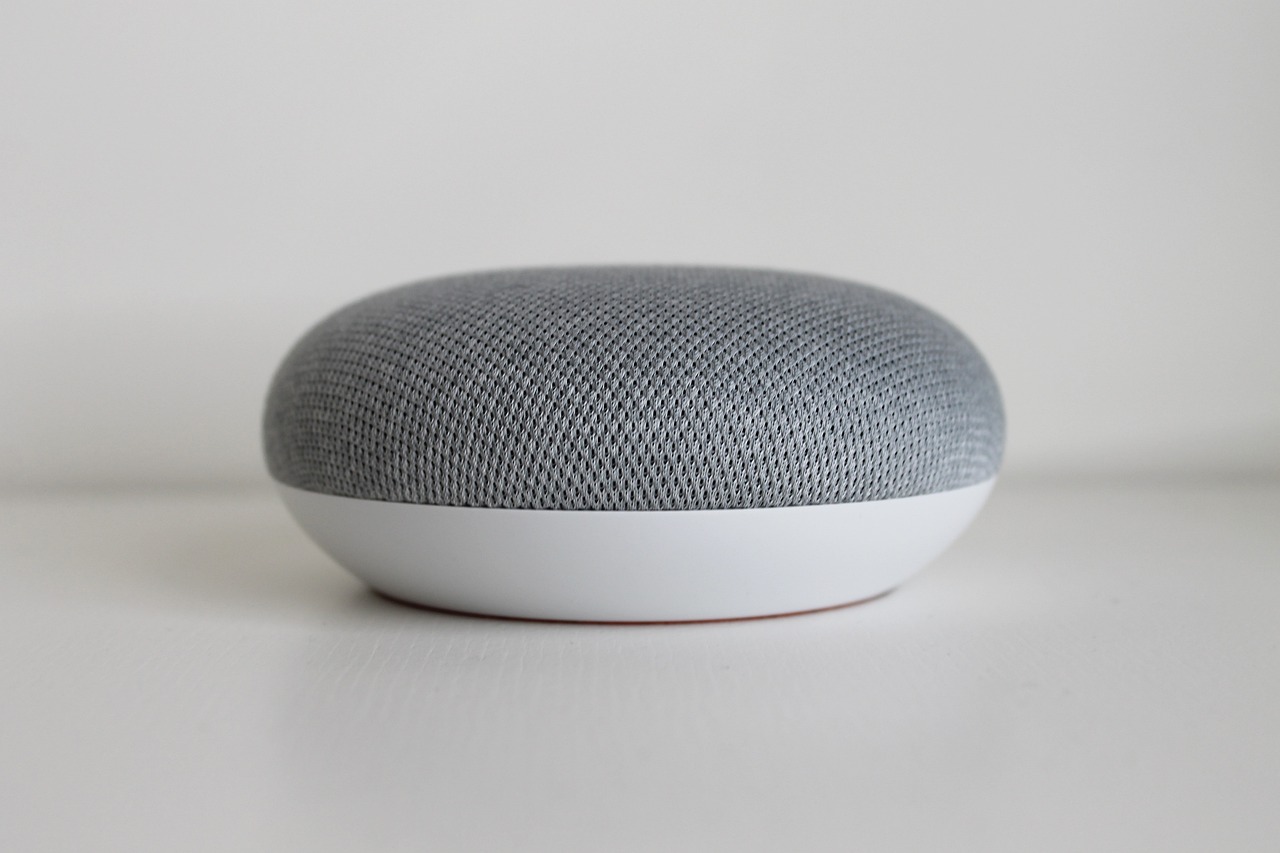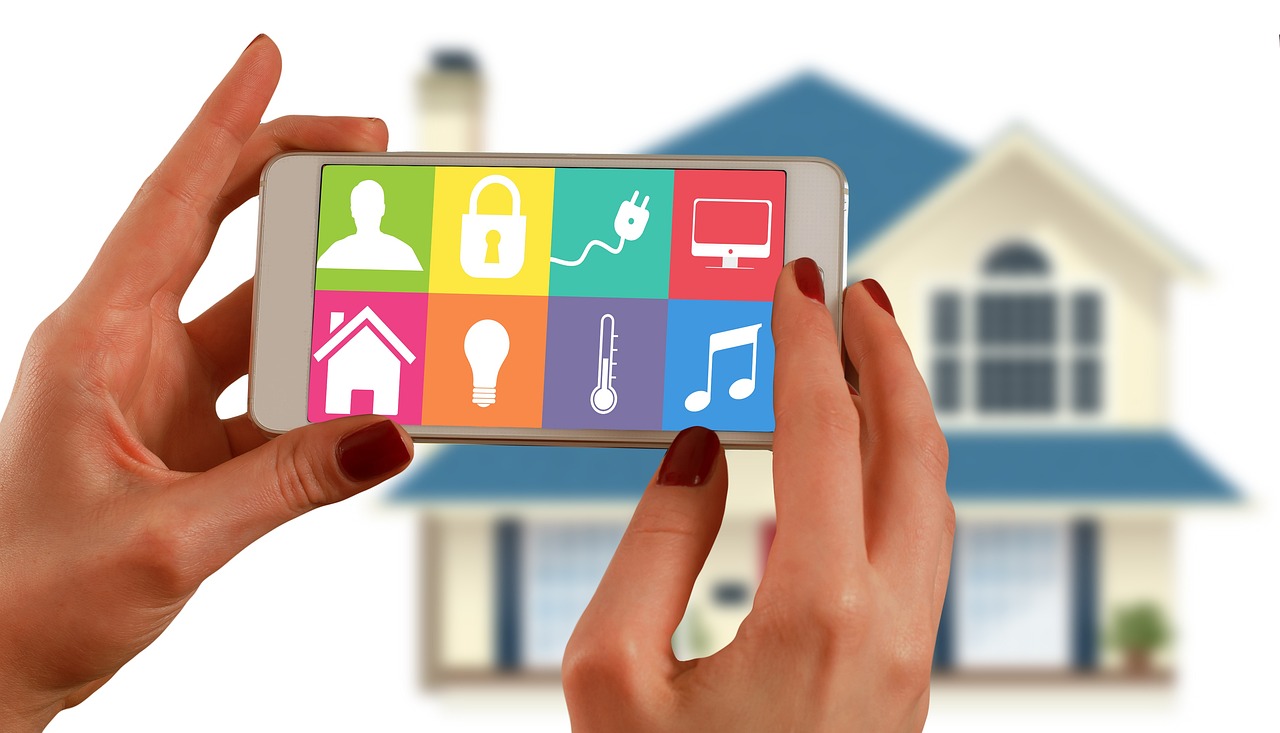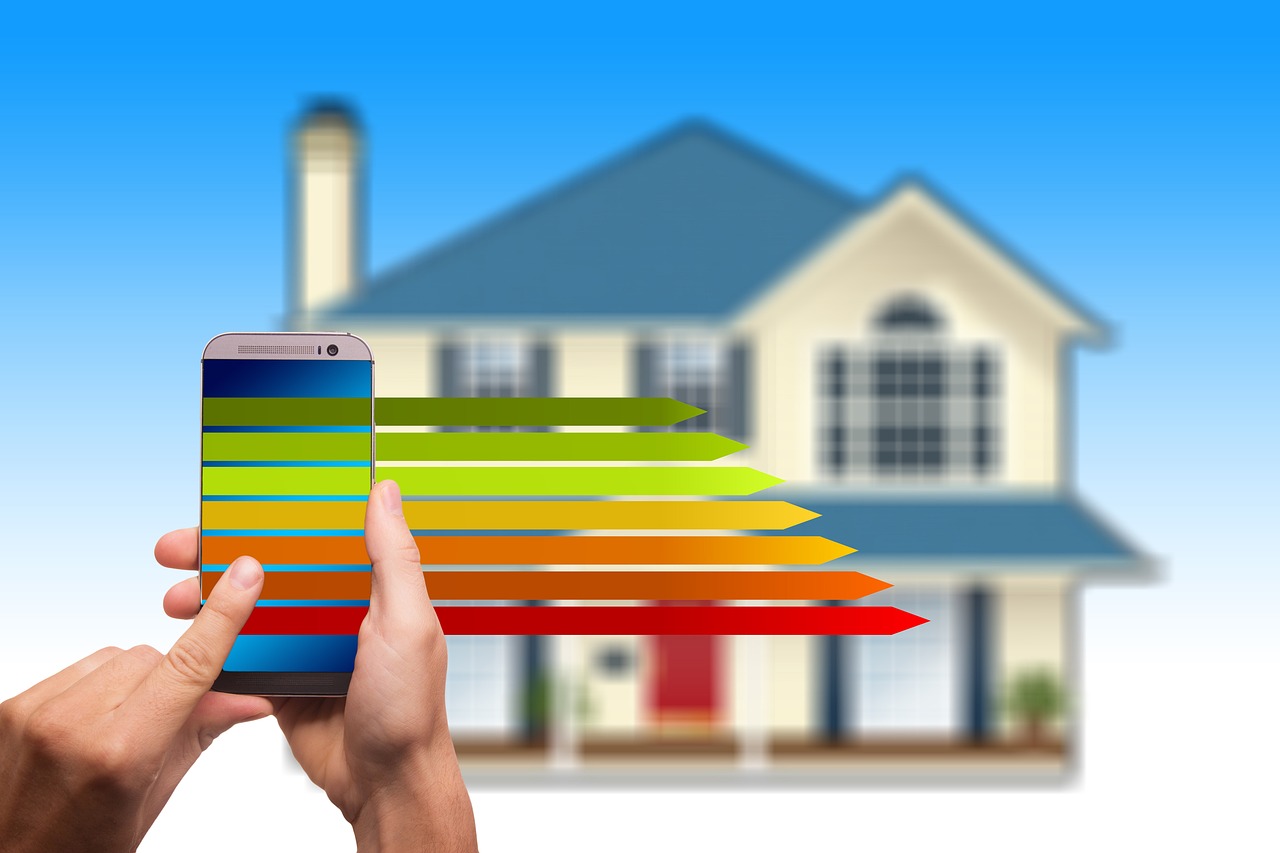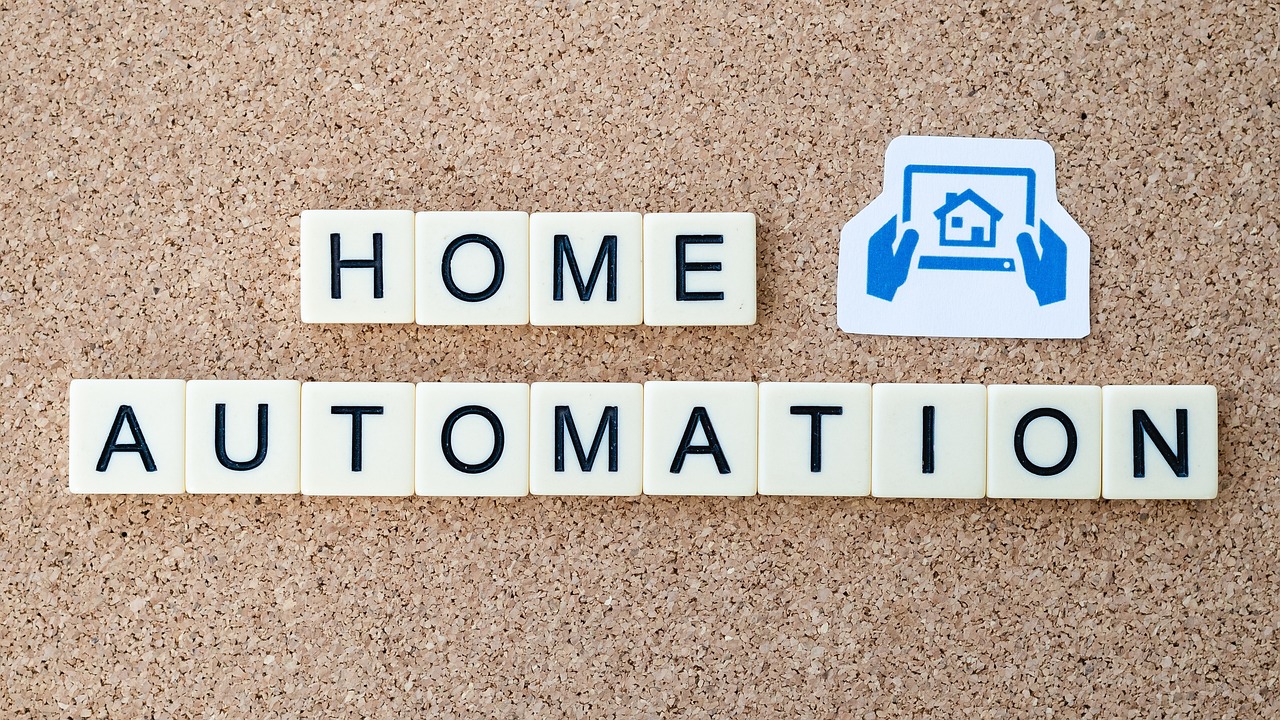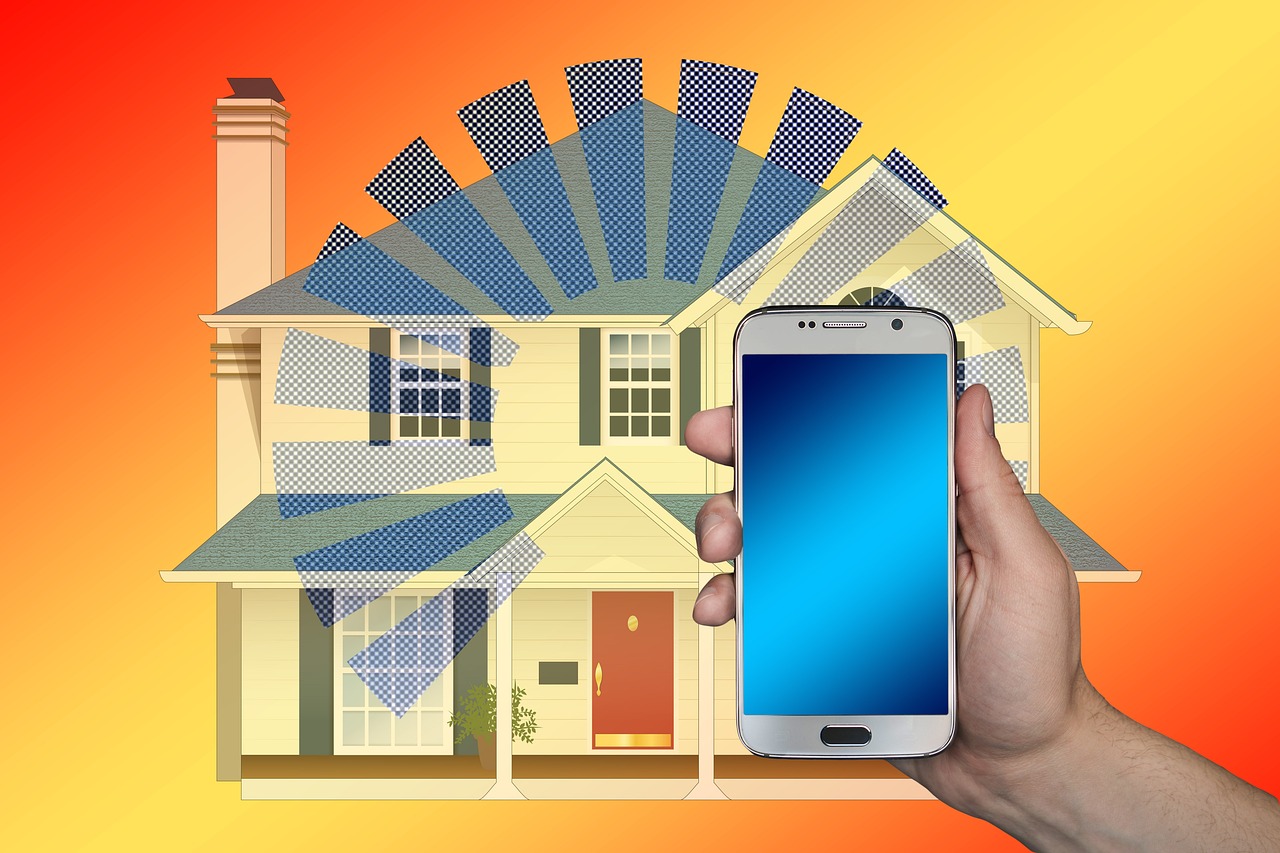Google Smart Home Devices represent a significant leap in home automation technology, offering innovative solutions that transform how we interact with our living spaces. As we delve into the evolution of these devices, we will explore their remarkable features, numerous benefits, and the ways they are reshaping our daily routines.
Understanding Google Smart Home Devices
Google Smart Home Devices include a diverse range of products, such as smart speakers, displays, thermostats, and security cameras. These devices are designed to work seamlessly together, allowing users to control various aspects of their home environment through voice commands or smartphone apps.
Key Features of Google Smart Home Devices
- Voice Recognition: This technology allows users to control devices hands-free, making daily tasks more efficient.
- Compatibility: Google Smart Home Devices integrate smoothly with a wide array of third-party products, enhancing functionality.
- Google Assistant Integration: This feature enables users to access information and control devices effortlessly.
Benefits of Google Smart Home Devices
Integrating Google Smart Home Devices into your life provides numerous advantages:
- Convenience: Automating routine tasks simplifies everyday life.
- Energy Efficiency: Smart devices optimize energy consumption, leading to potential savings on utility bills.
- Enhanced Security: Features like smart locks and cameras allow homeowners to monitor their property remotely.
Popular Google Smart Home Products
| Product | Description |
|---|---|
| Google Nest Hub | A smart display that combines voice control with visual feedback for managing your home. |
| Google Nest Mini | A compact smart speaker that delivers quality sound and voice command functionality. |
| Google Nest Thermostat | A smart thermostat that learns your schedule and adjusts heating and cooling for energy savings. |
Choosing the Right Device
When selecting a Google Smart Home Device, consider your specific needs and budget. Assessing your lifestyle and existing technology will help you make informed choices that enhance your smart home experience.
Future Trends in Smart Home Technology
The future of smart home technology looks promising with advancements in artificial intelligence and security features. These innovations will lead to even more intuitive devices that adapt to user preferences and enhance safety.
Conclusion
Embracing Google Smart Home Devices not only elevates your daily convenience and security but also paves the way for a more connected and efficient future in home technology.

What Are Google Smart Home Devices?
Google Smart Home Devices represent a significant leap forward in home automation technology, offering a variety of products that make our lives easier and more efficient. These devices include smart speakers, displays, and a range of appliances that can be controlled via voice commands or mobile applications. The primary goal of these devices is to enhance the way we interact with our homes, making everyday tasks simpler and more streamlined.
At the heart of Google’s smart home ecosystem is Google Assistant, an AI-powered virtual assistant that allows users to control their devices hands-free. This means you can adjust your thermostat, turn on lights, or play your favorite music simply by speaking. With a growing number of compatible products, Google Smart Home Devices can seamlessly integrate into your daily routine, adapting to your preferences and lifestyle.
Key Features of Google Smart Home Devices
- Voice Recognition: Enables hands-free control of various devices.
- Smart Automation: Allows for scheduled tasks and routines.
- Interconnectivity: Works with a wide range of third-party smart devices.
As you explore the world of Google Smart Home Devices, you will find that they not only improve convenience but also contribute to energy efficiency and enhanced home security. For instance, smart thermostats can learn your schedule and adjust heating and cooling accordingly, leading to lower energy bills.
In addition, many Google Smart Home Devices come equipped with security features, such as cameras and smart locks, allowing homeowners to monitor their properties remotely. This integration of technology into our living spaces signifies a shift towards a more connected and efficient future.
In summary, Google Smart Home Devices offer an innovative approach to home automation, making it easier than ever to manage our environments. With their advanced features and compatibility with various systems, they are paving the way for a smarter, more efficient home.

Key Features of Google Smart Home Devices
Google Smart Home Devices are revolutionizing the way we interact with technology in our homes. These innovative devices are designed not only for convenience but also for enhancing the overall quality of life. Below, we delve into some of the most important features that make these devices a must-have for modern households.
- Voice Recognition: One of the standout features of Google Smart Home Devices is their advanced voice recognition technology. This allows users to control their devices hands-free, making daily routines smoother and more efficient. Whether you want to adjust the thermostat or play your favorite song, a simple voice command can accomplish it all.
- Seamless Integration: These devices are compatible with a variety of smart home ecosystems. This means you can connect and control multiple devices from different manufacturers through a single platform, creating a cohesive smart home environment.
- Google Assistant Integration: With built-in Google Assistant, users can access a world of information and control their smart devices effortlessly. From setting reminders to checking the weather, Google Assistant makes managing your home more intuitive.
- Automation Capabilities: Google Smart Home Devices allow for automation of everyday tasks. You can schedule lights to turn on at sunset or set your coffee maker to brew when your morning alarm goes off, enhancing convenience.
- Energy Efficiency: Many of these devices are designed to optimize energy usage, which can lead to significant savings on utility bills. Smart thermostats, for example, learn your habits and adjust heating and cooling accordingly.
- Enhanced Security Features: Google Smart Home Devices often include security features such as cameras and smart locks. This allows homeowners to monitor their property remotely and receive alerts for unusual activity, enhancing peace of mind.
In summary, the key features of Google Smart Home Devices not only enhance convenience and efficiency but also improve the overall security and management of your home. By integrating these advanced technologies, you can transform your living space into a truly smart home.
Voice Control and Automation
Voice control technology has revolutionized the way we interact with our smart home devices, providing a hands-free experience that simplifies everyday tasks. With the ability to command devices using just our voice, we can enhance our daily routines and improve overall efficiency.
This intuitive user experience allows individuals to multitask effectively, whether they are cooking in the kitchen, relaxing on the couch, or managing household chores. By simply speaking commands, users can adjust lighting, control temperature settings, or even play their favorite music without needing to physically interact with their devices.
Moreover, the integration of voice recognition technology enables devices to understand and execute a variety of tasks. This includes:
- Adjusting Smart Lighting: Users can instruct their devices to change the brightness or color of lights, creating the perfect ambiance for any occasion.
- Controlling Home Appliances: From turning on the coffee maker to adjusting the thermostat, voice commands streamline the management of household appliances.
- Accessing Information: Users can ask questions or request updates on weather, news, or even set reminders, all through simple voice commands.
Setting up voice commands is a straightforward process that typically involves configuring settings through a dedicated app, such as the Google Home app. This allows users to personalize their smart home experience quickly and efficiently.
In conclusion, voice control and automation not only make daily tasks easier but also contribute to a more connected and efficient home environment. As technology continues to advance, we can expect even more innovative features that will enhance our interactions with smart devices.
How Voice Recognition Works
Voice recognition technology has revolutionized the way we interact with our devices, making it easier than ever to control various functions through spoken commands. This innovative technology analyzes the sounds and patterns of human speech, allowing devices to interpret and execute tasks with remarkable accuracy.
At its core, voice recognition works by converting spoken language into digital data that computers can understand. The process begins with sound wave capture, where a device’s microphone records the user’s voice. This audio input is then processed using complex algorithms that break down the speech into manageable components.
Once the sound is captured, the technology employs machine learning techniques to identify specific words and phrases. By comparing the captured audio against a vast database of known speech patterns, the device can accurately recognize commands. This is where natural language processing (NLP) comes into play, enabling devices to understand not just the words spoken but also the context and intent behind them.
One of the standout features of voice recognition technology is its ability to learn and adapt over time. As users interact with their devices, the system gathers data on speech patterns, accents, and preferences, allowing it to improve its accuracy and responsiveness. This personalized approach enhances the user experience, making it feel more intuitive and seamless.
In practical terms, voice recognition technology enables a wide range of functionalities. Users can effortlessly adjust lighting, play music, set reminders, and even control smart appliances, all through simple voice commands. This level of convenience not only saves time but also enhances accessibility for individuals with mobility challenges.
As voice recognition continues to evolve, we can expect even greater integration into our daily lives, paving the way for a future where technology responds to us more naturally and effectively.
Setting Up Voice Commands
for your Google Smart Home Devices is a simple and efficient process that allows users to tailor their smart home experience to their individual preferences. With the help of the Google Home app, setting up voice commands can be completed in just a few steps, making it accessible even for those who may not be tech-savvy.
First, users need to ensure that their Google Smart Home Devices are connected to the same Wi-Fi network as their smartphone. Once connected, the Google Home app provides an intuitive interface for configuring voice commands. This includes the ability to link various devices and assign custom commands that cater to specific needs.
One of the standout features of the Google Home app is its ability to recognize and adapt to different voices. This means that multiple users can set up their own voice profiles, allowing for a more personalized experience. For example, family members can ask the device to play their favorite music or control the thermostat just by using their voice, creating a seamless and interactive environment.
Moreover, users can create routines that automate multiple actions with a single command. For instance, saying “Good morning” can trigger the lights to turn on, the coffee maker to start brewing, and the news to play on the smart speaker. This level of automation not only enhances convenience but also saves time in daily routines.
In conclusion, through the Google Home app is an essential step in maximizing the benefits of Google Smart Home Devices. With straightforward configuration and personalized options, users can easily enhance their home automation experience, making everyday tasks more efficient and enjoyable.
Compatibility with Other Smart Devices
is a crucial aspect of Google Smart Home Devices, enabling users to create a cohesive and efficient smart home ecosystem. These devices are engineered to integrate seamlessly with a wide range of third-party products, enhancing overall functionality and user experience.
One of the standout features of Google Smart Home Devices is their ability to communicate with various brands and types of devices. This compatibility ensures that users can mix and match their favorite products without being tied to a single manufacturer. For instance, you can connect smart lights from Philips Hue, security cameras from Arlo, and smart thermostats from Nest, all controlled through the Google Home app.
Moreover, the integration with Google Assistant allows users to manage their devices through voice commands, making daily interactions even more convenient. Imagine asking your Google Nest Mini to turn off the lights, adjust the thermostat, or show you who’s at the door—all without lifting a finger. This level of automation not only simplifies tasks but also enhances the overall smart home experience.
In addition to voice control, Google Smart Home Devices support various communication protocols, such as Zigbee and Z-Wave, which further broaden their compatibility. This means that even if a device doesn’t directly support Google Assistant, it can often still be integrated into your smart home setup through a compatible hub.
Furthermore, the ease of setup is another significant advantage. Users can quickly add new devices to their existing ecosystem using the Google Home app, which provides step-by-step instructions for a hassle-free experience. This user-friendly approach ensures that even those new to smart home technology can enjoy the benefits of a connected home.
In conclusion, the compatibility of Google Smart Home Devices with a wide array of third-party products not only enhances functionality but also empowers users to customize their smart home ecosystem according to their preferences. By embracing this flexibility, homeowners can create a tailored environment that meets their unique needs.

Benefits of Using Google Smart Home Devices
Integrating Google Smart Home Devices into your daily routine offers a multitude of advantages that can significantly enhance your lifestyle. These devices are designed not only for convenience but also for improving energy efficiency and bolstering home security. Below, we explore these benefits in detail.
- Increased Convenience: Google Smart Home Devices streamline daily tasks, allowing you to control various aspects of your home with simple voice commands or through your smartphone. Imagine adjusting the thermostat, turning on lights, or even locking doors without lifting a finger!
- Energy Efficiency: These devices can automate energy usage, helping you save on utility bills. For instance, smart thermostats learn your habits and adjust heating and cooling based on your preferences, ensuring that energy is not wasted.
- Enhanced Security: With features such as smart cameras and locks, Google Smart Home Devices allow homeowners to monitor their property remotely. You can receive alerts on your phone if unusual activity is detected, providing peace of mind whether you are at home or away.
- Integration with Other Smart Devices: Google Smart Home Devices seamlessly connect with a variety of third-party products. This compatibility allows you to create a cohesive ecosystem that enhances the functionality of your home.
- Customization: Users can personalize their smart home experience by setting up routines. For example, you can create a “Good Morning” routine that gradually turns on lights, brews coffee, and adjusts the thermostat to your preferred morning settings.
In conclusion, the integration of Google Smart Home Devices into your daily life not only simplifies tasks but also contributes to a more secure and energy-efficient home environment. Embracing these technologies can lead to a smarter, more connected living space that adapts to your needs.
Energy Efficiency and Cost Savings
In today’s world, where energy conservation is becoming increasingly important, smart devices play a pivotal role in optimizing energy usage within our homes. By automating various tasks such as lighting, heating, and cooling, these devices not only enhance convenience but also lead to significant cost savings on utility bills over time.
One of the primary ways smart devices achieve this is through intelligent automation. For example, smart thermostats can learn your daily routines and adjust the heating or cooling accordingly, ensuring that energy is not wasted when you are away from home. Similarly, smart lighting systems can automatically turn off lights in unoccupied rooms or adjust brightness based on natural light availability, reducing electricity consumption.
Moreover, many smart devices provide users with detailed insights into their energy usage patterns. This data allows homeowners to identify areas where they can improve efficiency and make informed decisions about their energy consumption. For instance, a smart plug can track the energy usage of connected devices, helping users to unplug appliances that consume power even when not in use.
Additionally, integrating smart devices with renewable energy sources, such as solar panels, can further enhance energy efficiency. Smart energy management systems can optimize the use of solar energy, storing excess power for later use and reducing reliance on the grid during peak hours.
In conclusion, embracing smart technology not only contributes to a more sustainable lifestyle but also offers tangible financial benefits. By automating energy management and providing valuable insights, smart devices empower homeowners to take control of their energy consumption, ultimately leading to substantial savings over time.
Improved Home Security
has become a crucial aspect of modern living, and Google Smart Home Devices play a pivotal role in enhancing safety for homeowners. With the integration of advanced technology, these devices not only provide convenience but also ensure that your home is secure, even when you’re away.
One of the standout features of Google Smart Home Devices is their ability to monitor your property remotely. Smart cameras can be placed around your home, allowing you to view live feeds from your smartphone or tablet. This feature enables you to keep an eye on your surroundings, whether you’re at work, on vacation, or simply in another room. Additionally, many of these cameras come equipped with motion detection alerts, notifying you instantly if any unusual activity is detected.
Another essential component of home security is the use of smart locks. These locks allow you to control access to your home from your smartphone, giving you the ability to lock or unlock doors remotely. This feature is particularly useful for granting access to visitors or service personnel without needing to be physically present. Furthermore, smart locks often include a history log, so you can track who entered or exited your home and when.
| Device Type | Key Features |
|---|---|
| Smart Cameras | Live streaming, motion detection, night vision |
| Smart Locks | Remote access, activity log, keyless entry |
| Smart Doorbells | Two-way audio, video recording, alerts |
In addition to cameras and locks, Google Smart Home Devices can integrate with other security systems, enhancing your overall safety. For instance, you can set up routines that trigger alarms or send notifications to your phone if a camera detects movement. This level of integration allows for a comprehensive security solution tailored to your specific needs.
In conclusion, the incorporation of Google Smart Home Devices into your security strategy not only enhances your home’s safety but also provides peace of mind. With features like remote monitoring and smart locks, you can take control of your home security, ensuring that you and your loved ones feel safe at all times.

Popular Google Smart Home Products
In the realm of home automation, Google has established itself as a leader with its innovative smart home devices. Among the most sought-after products are the Google Nest Hub, Google Nest Mini, and Google Nest Thermostat. Each of these devices is designed to address specific home automation needs while providing users with enhanced convenience and control.
- Google Nest Hub: This smart display is not just a speaker; it acts as a central control hub for your smart home. With a vibrant touchscreen, users can view videos, manage their calendar, and control compatible smart devices with simple voice commands. The Nest Hub also features a built-in Google Assistant, making it easy to ask questions and receive visual answers.
- Google Nest Mini: Compact yet powerful, the Nest Mini is perfect for those who want a quality smart speaker without taking up too much space. It delivers impressive sound quality and integrates seamlessly with Google Assistant, allowing users to play music, set reminders, and control other smart devices effortlessly.
- Google Nest Thermostat: Designed to optimize energy usage, the Nest Thermostat learns your heating and cooling preferences over time. It can be controlled remotely through the Google Home app, enabling users to adjust their home’s temperature from anywhere. This not only enhances comfort but also contributes to energy savings.
These products exemplify how Google is revolutionizing home automation, making it easier for users to manage their living spaces. By integrating advanced technology with user-friendly interfaces, Google Smart Home Devices are paving the way for a more connected and efficient future.
In conclusion, whether you are looking to enhance your home entertainment system or improve energy efficiency, Google’s range of smart home products offers tailored solutions to meet diverse needs. Embracing these devices can transform your everyday life, making your home smarter and more responsive to your lifestyle.
Google Nest Hub
is a remarkable addition to the world of smart home technology, serving as a multifunctional device that enhances daily living. This versatile smart display not only responds to voice commands but also provides visual feedback, making it easier for users to interact with their smart home ecosystem.
With its sleek design and user-friendly interface, the Google Nest Hub allows users to manage their smart home devices effortlessly. Whether it’s adjusting the thermostat, turning on lights, or checking security cameras, the Hub serves as a central command center. Its integration with Google Assistant empowers users to control their home with simple voice commands, enhancing convenience in everyday tasks.
One of the standout features of the Google Nest Hub is its ability to stream videos and display photos. Users can watch their favorite shows, view family pictures, or even follow along with recipes while cooking. This functionality transforms the Hub into an entertainment hub, making it a valuable addition to any room in the house.
In addition to entertainment, the Google Nest Hub excels in providing real-time information. Users can quickly access weather updates, news briefings, and calendar reminders, all displayed clearly on the screen. This feature allows for a more informed and organized lifestyle.
Moreover, the Google Nest Hub is designed to be compatible with a wide range of smart home products, from lights and thermostats to security systems. This compatibility ensures that users can create a cohesive smart home ecosystem tailored to their specific needs.
In conclusion, the Google Nest Hub is a powerful tool that not only simplifies home automation but also enriches the overall user experience. With its combination of voice control, visual feedback, and integration capabilities, it stands out as a significant player in the smart home market.
Google Nest Mini
is more than just a compact smart speaker; it represents a significant leap in home technology. With its exceptional sound quality and advanced voice control features, it has quickly become a favorite among music enthusiasts and tech-savvy individuals alike.
This small yet powerful device is designed to fit seamlessly into any room, providing an unobtrusive yet efficient way to manage your smart home. The not only plays music but also acts as a central hub for controlling various smart devices, making it an essential addition to any modern home.
| Feature | Description |
|---|---|
| High-Quality Sound | Delivers rich, clear audio that enhances your listening experience. |
| Voice Control | Utilizes Google Assistant for hands-free operation, allowing you to control your home with simple voice commands. |
| Compact Design | Small enough to fit anywhere, making it versatile for any room in your home. |
| Smart Home Integration | Compatible with a wide range of smart devices, enabling seamless automation and control. |
Setting up the is a breeze. Simply download the Google Home app, and follow the easy step-by-step instructions to connect your device to Wi-Fi and customize your settings. Once set up, you can ask it to play your favorite playlist, control your lights, or even provide you with the latest news updates.
- Music Lovers: Enjoy high-quality audio streaming from popular services like Spotify and YouTube Music.
- Smart Home Control: Manage compatible devices such as smart bulbs and thermostats effortlessly.
- Hands-Free Assistance: Get answers to questions, set reminders, and manage your schedule with voice commands.
In conclusion, the is an exceptional choice for anyone looking to enhance their home with smart technology. Its combination of quality sound, voice control, and smart integration makes it a valuable addition to any household.

How to Choose the Right Google Smart Home Device
Choosing the Right Google Smart Home Device is essential for creating a seamless and efficient smart home environment. With a plethora of options available, understanding your specific needs and the compatibility of devices can significantly enhance your experience. This guide will help you navigate the selection process, ensuring that you make informed decisions tailored to your lifestyle.
- Assess Your Needs: Start by evaluating your daily routines and how smart devices can simplify your life. Do you need a device for security, entertainment, or energy management? Identifying your primary goals will guide your choices.
- Consider Space: The layout of your home can influence your device selection. For instance, larger spaces may benefit from multiple speakers for better audio distribution, while smaller areas might only require a compact smart speaker.
- Check Compatibility: Ensure that the Google Smart Home Device you choose is compatible with your existing devices. This includes checking if it works with other smart home ecosystems like Amazon Alexa or Apple HomeKit.
- Evaluate Features: Different devices come with varying features. For example, if voice control is a priority, consider devices that integrate Google Assistant effectively. Features like camera quality, display size, and sound output are also crucial.
- Budget Wisely: Establishing a budget is critical. Google offers a range of products at different price points, so determine what you can afford while prioritizing essential features.
As you explore the possibilities, remember that the right Google Smart Home Device can significantly enhance your home’s functionality, making it more convenient, secure, and enjoyable. By taking the time to assess your needs and preferences, you can create a tailored smart home experience that fits seamlessly into your lifestyle.
Assessing Your Home’s Needs
is a crucial step in creating a smart home that truly enhances your lifestyle. When selecting devices, it is essential to consider your unique daily routines and how technology can streamline them. By understanding your specific requirements, you can choose the most effective solutions that will integrate seamlessly into your home environment.
First and foremost, take a moment to evaluate your daily activities. Do you often find yourself juggling multiple tasks at once? If so, investing in devices that offer automation features, such as smart lights or smart plugs, can significantly simplify your life. For instance, smart lighting systems can be programmed to turn on or off based on your schedule, helping to create a more efficient daily routine.
Next, consider the size and layout of your home. Larger spaces may benefit from a comprehensive smart home system that includes multiple devices working together. In contrast, smaller apartments might only require a few essential devices. For example, a smart thermostat can help manage heating and cooling efficiently, providing comfort without excessive energy consumption.
Additionally, think about your family dynamics. If you have children or elderly family members, devices with enhanced safety features, such as smart locks and security cameras, can provide peace of mind. These devices allow you to monitor your home remotely and ensure the safety of your loved ones.
Lastly, it’s important to assess your budget. Smart home technology can vary widely in price, so establishing a clear budget will help you prioritize which devices are essential versus those that are nice to have. Start with a few key devices that meet your most pressing needs and expand your smart home ecosystem over time.
In conclusion, by carefully assessing your home’s needs, you can make informed decisions that will lead to a more functional and enjoyable living space. Embracing smart technology tailored to your lifestyle will enhance convenience, security, and overall quality of life.
Budget Considerations
are an essential aspect of planning your investment in smart home technology. As the market for smart devices continues to expand, it becomes increasingly important to establish a clear financial framework. This allows you to prioritize essential devices while exploring options that fit your financial constraints.
When considering your budget, it is vital to assess your needs first. Ask yourself what functionalities will enhance your daily life. Are you looking for improved security, energy efficiency, or convenience? By identifying your primary requirements, you can allocate your budget more effectively.
- Identify Key Devices: Focus on devices that meet your immediate needs, such as smart speakers, security cameras, or thermostats.
- Research Costs: Take the time to compare prices from various retailers and look for discounts or bundles that can save you money.
- Consider Future Expansions: Leave room in your budget for future purchases, as your smart home ecosystem may grow over time.
It’s also important to consider the total cost of ownership. Some devices may have a lower upfront cost but could lead to higher energy bills or require additional subscriptions. For instance, smart thermostats can save you money in the long run by optimizing your heating and cooling systems. Therefore, evaluate the potential cost savings against the initial investment.
Lastly, don’t forget about installation costs. Some smart devices may require professional installation, while others can be set up easily by the user. Always factor these expenses into your overall budget to avoid any surprises.
In conclusion, establishing a budget for smart home technology is crucial. It provides a roadmap for your purchases, ensuring that you invest in devices that will truly enhance your home while staying within your financial means. By carefully considering your needs and potential costs, you can create a smart home that is both functional and affordable.

Future Trends in Smart Home Technology
The future of smart home technology is set to revolutionize the way we live, offering enhanced convenience, security, and integration. As advancements in artificial intelligence (AI) and the Internet of Things (IoT) continue to evolve, smart homes will become increasingly sophisticated, enabling seamless interactions between devices and users.
- Advancements in AI: Smart home devices will leverage AI to learn user preferences, making them more intuitive and responsive. This will allow for personalized experiences, such as adjusting lighting based on the time of day or automatically setting the thermostat when you leave home.
- Enhanced Security Features: Future smart home systems are expected to incorporate advanced security measures, including facial recognition and AI-driven surveillance. These innovations will provide homeowners with real-time alerts and enhanced monitoring capabilities, ensuring peace of mind.
- Greater Integration with IoT Devices: As more devices become interconnected, the smart home ecosystem will grow. This integration will allow for comprehensive control over various aspects of home management, from energy consumption to security systems, all accessible through a single interface.
Moreover, the increasing popularity of voice-activated assistants will further simplify interactions with smart home devices, enabling users to control their environment effortlessly. The integration of smart technology into daily routines will not only enhance convenience but also promote energy efficiency by optimizing resource usage.
In conclusion, the future of smart home technology is bright, with innovations in AI, security, and IoT integration shaping our living spaces. As these technologies become more accessible, embracing smart home solutions will lead to a more connected, efficient, and secure lifestyle.
Integration with Artificial Intelligence
is rapidly transforming the landscape of smart home technology, making devices more responsive and user-friendly. As AI continues to evolve, these devices are becoming increasingly adept at understanding and adapting to user preferences, leading to a more personalized living experience.
One of the most significant advancements in smart home technology is the ability of devices to learn from user interactions. For example, smart thermostats can analyze your daily routines and adjust the temperature accordingly, ensuring comfort while optimizing energy usage. This not only enhances the user experience but also contributes to energy efficiency and cost savings.
- Personalized Automation: AI algorithms can automate tasks based on user habits. For instance, smart lighting systems can adjust brightness based on the time of day or even user mood, creating an ambiance tailored to individual preferences.
- Predictive Maintenance: Smart appliances equipped with AI can monitor their own performance and alert users when maintenance is needed, preventing costly repairs and extending the lifespan of the devices.
- Enhanced Security Features: AI integration in security systems allows for advanced features such as facial recognition and anomaly detection, providing homeowners with real-time alerts and improved safety.
Moreover, the integration of AI with voice assistants like Google Assistant enhances the overall user experience. Users can interact with their smart home devices using natural language, making commands more intuitive. This level of interaction not only simplifies daily tasks but also encourages greater engagement with technology.
As we look towards the future, the potential for AI in smart home technology is vast. With continuous advancements, we can expect even more sophisticated systems that not only respond to commands but also anticipate needs, making our living spaces more efficient and enjoyable.
In conclusion, the integration of artificial intelligence into smart home devices marks a significant leap forward in home automation. By learning user preferences and automating tasks, AI is set to revolutionize our daily lives, creating a more connected and personalized home environment.
Enhanced Security Features
in smart home technology are rapidly evolving, providing homeowners with innovative solutions to ensure their safety and peace of mind. As we look to the future, these advancements promise to revolutionize how we secure our homes.
One of the most significant developments in this realm is the integration of facial recognition technology. This system allows smart security cameras to identify familiar faces, alerting homeowners to any unusual activity. For instance, if an unknown person is detected, the system can send real-time notifications to the homeowner’s smartphone, enabling them to take immediate action.
In addition to facial recognition, AI-driven monitoring systems are becoming increasingly prevalent. These systems utilize machine learning algorithms to analyze patterns of behavior in and around the home. By learning what is normal for a household, the AI can quickly identify anomalies, such as unusual movement at odd hours, and notify homeowners accordingly.
| Feature | Description |
|---|---|
| Facial Recognition | Identifies known individuals and alerts homeowners to unfamiliar faces. |
| AI Monitoring | Analyzes behavior patterns to detect unusual activities. |
| Remote Access | Allows homeowners to monitor their property from anywhere using a smartphone app. |
Moreover, advancements in remote access technology enable homeowners to monitor their properties from anywhere in the world. With mobile applications, users can view live feeds from their security cameras, lock or unlock doors, and even communicate with visitors at their doorstep. This level of control provides an unparalleled sense of security.
In conclusion, the future of home security is bright, with advanced security systems leveraging facial recognition and AI-driven monitoring to enhance safety. Homeowners can look forward to a more secure environment, allowing them to enjoy peace of mind knowing they are protected by the latest technology.

Conclusion: Embracing the Future of Home Tech
In today’s rapidly evolving technological landscape, adopting Google Smart Home Devices is not merely a trend; it represents a significant shift towards a more integrated and efficient living environment. These devices are designed to enhance your home experience by providing unmatched convenience and advanced security features that cater to the modern homeowner’s needs.
One of the most compelling aspects of Google Smart Home Devices is their ability to unify various technologies into a single, cohesive system. This integration allows users to control lighting, heating, security cameras, and even kitchen appliances from a central platform, often using just their voice. For instance, with a simple command to Google Assistant, you can adjust your thermostat or lock your doors, making your daily routines smoother.
Moreover, the energy efficiency offered by these devices cannot be overlooked. Smart thermostats and lights can adjust automatically based on your habits, leading to lower utility bills and a smaller carbon footprint. This not only saves you money but also contributes positively to the environment.
Security is another paramount concern for homeowners, and Google Smart Home Devices excel in this area. With features like smart locks and surveillance cameras, you can monitor your home remotely, receive alerts about unusual activities, and ensure that your family is safe at all times. The peace of mind that comes from knowing your home is secure is invaluable.
As we look to the future, the potential for Google Smart Home Devices continues to expand. With advancements in artificial intelligence and IoT integration, these devices are expected to become even more intuitive, learning user preferences and adapting to provide a more personalized experience. This evolution will not only enhance convenience but will also pave the way for smarter living.
In conclusion, embracing Google Smart Home Devices is about more than just adopting new technology; it is about investing in a future where your home is more connected, efficient, and secure. By integrating these devices into your daily life, you are not only enhancing your own living experience but also contributing to a broader movement towards smarter, more sustainable homes.
Frequently Asked Questions
- What are Google Smart Home Devices?
Google Smart Home Devices are a range of products designed to automate and enhance your home experience. This includes smart speakers, displays, and various appliances that can be controlled through voice commands or smartphone apps.
- How do I set up voice commands for my devices?
Setting up voice commands is a breeze! Simply use the Google Home app to configure your devices. It guides you through the process, allowing you to personalize your smart home experience quickly and easily.
- Can Google Smart Home Devices work with other brands?
Absolutely! Google Smart Home Devices are designed to integrate seamlessly with a wide variety of third-party devices, creating a cohesive ecosystem that enhances your overall smart home functionality.
- What are the benefits of using Google Smart Home Devices?
There are numerous benefits, including increased convenience, energy efficiency, and enhanced security. These devices can help automate daily tasks, reduce energy consumption, and provide peace of mind with advanced security features.
- How do I choose the right Google Smart Home Device for my home?
Consider your lifestyle and specific needs when selecting a device. Assess your daily routines, space, and budget to find the perfect fit for your smart home setup.






